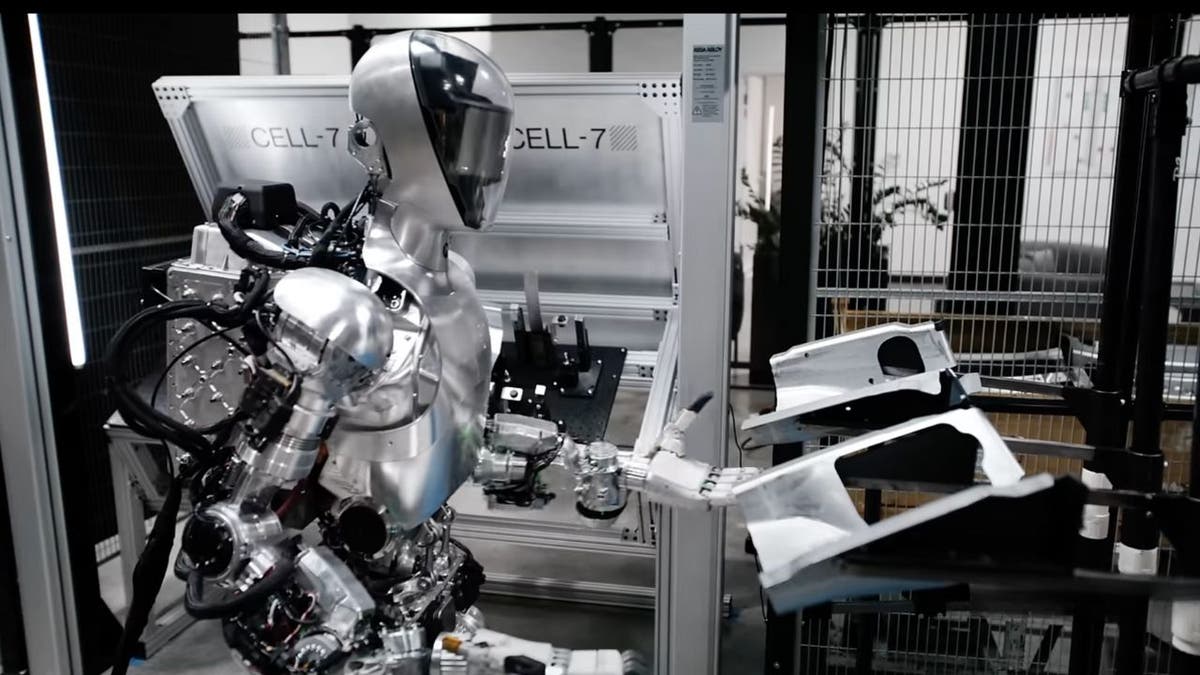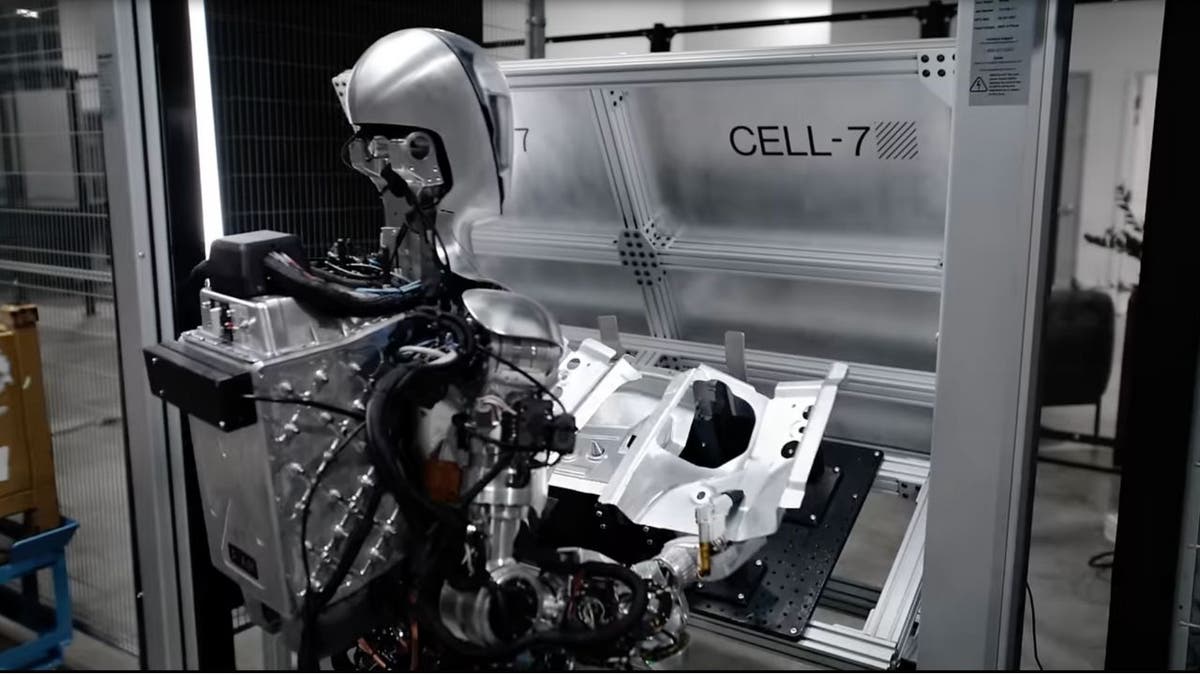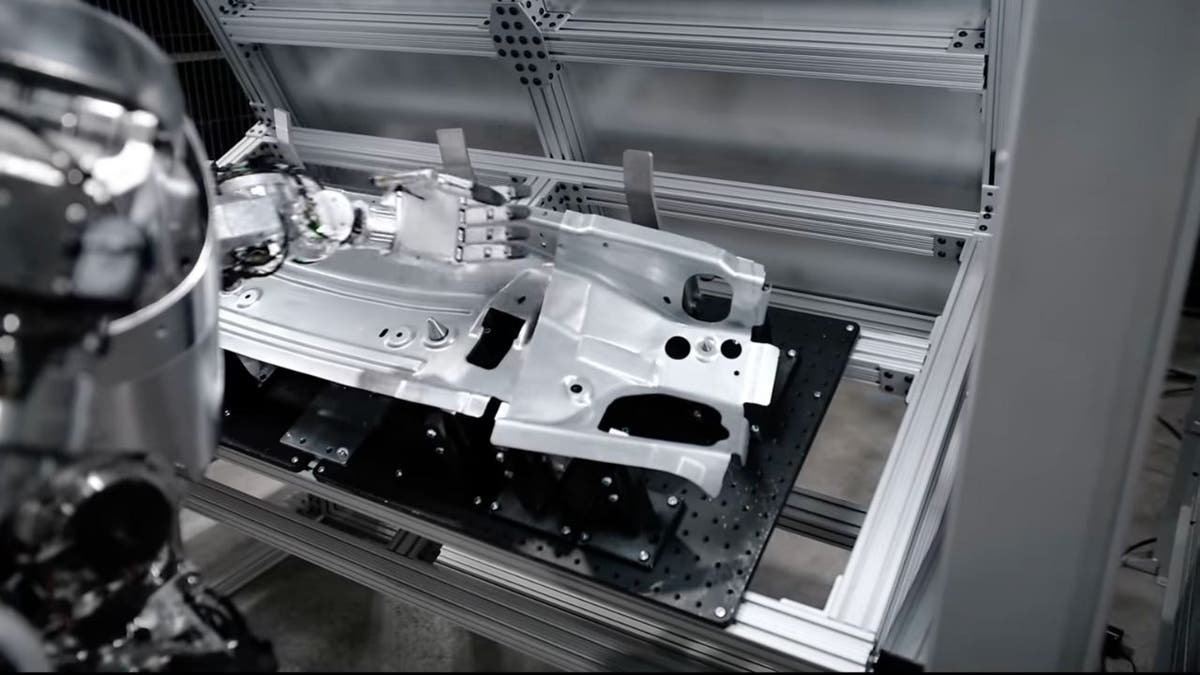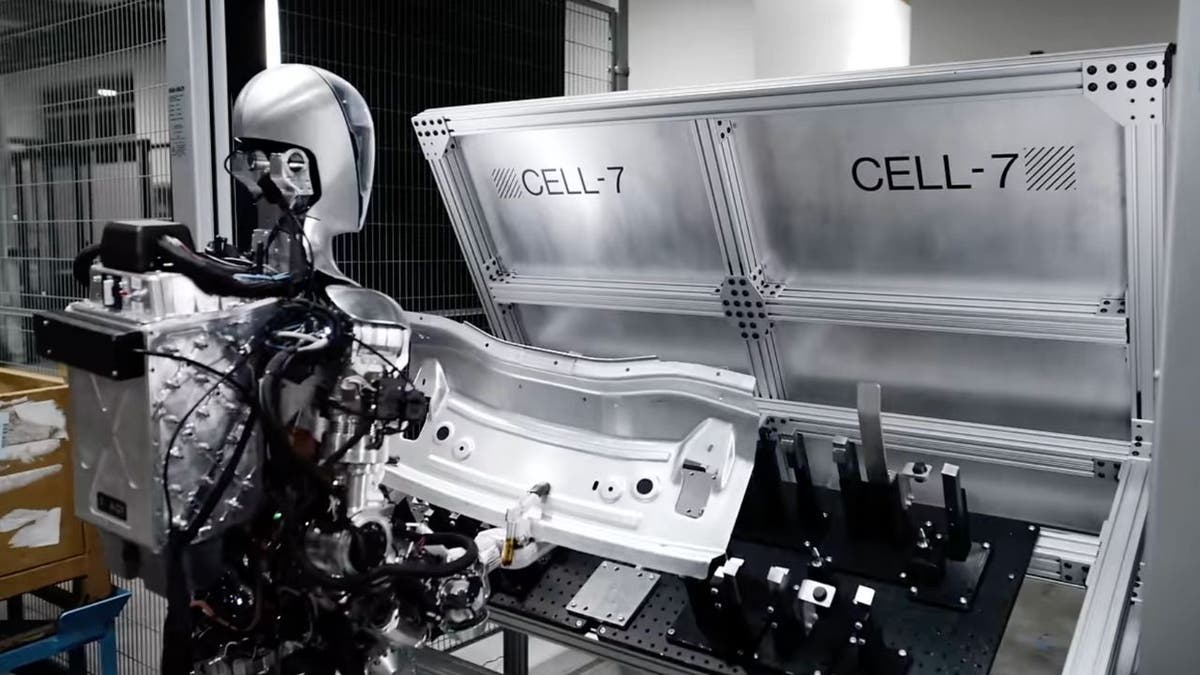'CyberGuy': Humanoid robot gets to work as an autoworker
Tech expert Kurt Knutsson reveals how Figure's robot shows advanced manufacturing skills at BMW plant.
Nearly six months after announcing its partnership with BMW, Figure's gleaming silver humanoid robot is making significant progress in its training for manufacturing tasks. A recently released video shows off the robot's evolving capabilities, highlighting the potential future of AI-powered humanoids in industrial settings. This development marks a crucial step forward in integrating advanced robotics into real-world manufacturing environments.
GET SECURITY ALERTS, EXPERT TIPS - SIGN UP FOR KURT’S NEWSLETTER - THE CYBERGUY REPORT HERE

Humanoid robot working in BMW assembly plant (Figure) (Kurt "CyberGuy" Knutsson)
The rise of AI-powered humanoid robots
The field of AI-powered humanoid robots is currently experiencing a surge in development, with numerous companies working towards creating versatile machines capable of performing a wide array of physical tasks typically done by humans. These robots aim to provide a more cost-effective and consistent labor source, potentially revolutionizing economic growth and labor markets. The ultimate goal is to create a workforce that can adapt to various tasks, potentially decoupling economic growth from population figures and unlocking a source of labor limited only by resources.

Humanoid robot working in BMW assembly plant (Figure) (Kurt "CyberGuy" Knutsson)
CHINA UNVEILS ITS FIRST FULL-SIZE ELECTRIC RUNNING HUMANOID ROBOT
Figure's humanoid: Key features and capabilities
Figure's humanoid robot stands at 5 feet 6 inches tall, weighs approximately 132 pounds and can carry a payload of up to 44 pounds. It operates on an electric system and can run continuously for five hours, reaching a maximum speed of about 2.7 mph. These specifications place it in a range that allows for meaningful work in manufacturing settings while still maintaining a form factor similar to human workers.

Humanoid robot working in BMW assembly plant (Figure) (Kurt "CyberGuy" Knutsson)
ELECTRIC HUMANOID ROBOT POISED TO SHAKE UP THE JOB MARKET
BMW partnership: A milestone for Figure
The partnership between Figure and BMW represents a significant milestone for the robotics startup. This collaboration marks Figure's first commercial deal since its founding in 2022, demonstrating the industry's growing interest in humanoid robotic solutions.
The humanoid robots will be deployed at BMW's manufacturing facility in Spartanburg, South Carolina, which is currently the largest automotive exporter in the United States, employing 11,000 people. Over the next 12 to 24 months, these robots will be integrated into various processes, including the body shop, sheet metal work and warehouse operations.

Humanoid robot working in BMW assembly plant (Figure) (Kurt "CyberGuy" Knutsson)
HOW 1X'S HUMANOID ROBOT IS PUTTING A STOP TO YOU HAVING TO FOLD LAUNDRY
Training progress: The 'BMW Full Use Case'
The latest video demonstration, titled the "BMW Full Use Case," showcases the Figure robot's advancements in several key areas. The machine now demonstrates improved capabilities in grasping complex shapes, navigating and avoiding obstacles, precision placement of parts and even error correction and fine-tuning.
For instance, the robot can now handle large, complex shapes with its rubber-tipped fingers and place them accurately on jigs, even when the robot's view of the locating pegs is obstructed. When it notices that parts are not sitting properly, it can tap them into place with the back of its hand, showcasing an ability to correct its own errors.

Humanoid robot working in BMW assembly plant (Figure) (Kurt "CyberGuy" Knutsson)
Challenges and competition
Figure's humanoid robot is entering a competitive field, with several other companies developing similar technologies. Apptronik, for example, has partnered with Mercedes to trial its Apollo robot, while the well-established Boston Dynamics continues to develop its Atlas robot for various applications, including auto-manufacturing tasks. Tesla, with its vast car production facilities, is also in the race with its Optimus robot.
Each company is taking a slightly different approach to development and real-world implementation, creating a diverse and rapidly evolving landscape in the humanoid robotics industry.
HOW TO REMOVE YOUR PRIVATE DATA FROM THE INTERNET

Humanoid robot working in BMW assembly plant (Figure) (Kurt "CyberGuy" Knutsson)
The future of humanoid robots in manufacturing
As AI behavior models continue to develop, we can expect to see significant advancements in the capabilities of these humanoid robots. Their motions are likely to become faster and smoother, and their ability to acquire new skills will accelerate. The integration of these robots into real-world manufacturing environments is expected to increase, potentially transforming production processes across various industries.
However, as we move forward, it will be crucial to monitor the economic, ethical and societal implications of widespread humanoid robot adoption. The integration of these advanced machines into the workforce raises important questions about the future of human labor, job displacement and the need for new skills in the workforce. The coming years will likely see continued rapid advancements in this field, potentially reshaping our understanding of work and automation. As these technologies progress, it will be essential to strike a balance between technological innovation and the preservation of human employment and well-being.

Humanoid robot working in BMW assembly plant (Figure) (Kurt "CyberGuy" Knutsson)
Kurt's key takeaways
The development of general-purpose humanoid robots represents a potentially transformative technology for the manufacturing industry and beyond. While Figure's robot is still in its early stages, the progress demonstrated in the BMW partnership is promising and indicative of the rapid advancements in this field. However, for these robots to truly revolutionize the workforce, they will need to prove a clear economic advantage over human workers. This includes not only performing tasks efficiently but also adapting to new situations and working safely alongside humans.
How do you think the widespread adoption of humanoid robots in manufacturing and other industries will impact the future of human workers in those facilities? Let us know by writing us at Cyberguy.com/Contact.
For more of my tech tips and security alerts, subscribe to my free CyberGuy Report Newsletter by heading to Cyberguy.com/Newsletter.
Ask Kurt a question or let us know what stories you'd like us to cover.
Follow Kurt on his social channels:
Answers to the most asked CyberGuy questions:
- What is the best way to protect your Mac, Windows, iPhone and Android devices from getting hacked?
- What is the best way to stay private, secure and anonymous while browsing the web?
- How can I get rid of robocalls with apps and data-removal services?
- How do I remove my private data from the internet?
- What are Kurt’s picks for best Amazon Prime Day 2024 Deals?
Copyright 2024 CyberGuy.com. All rights reserved.





















